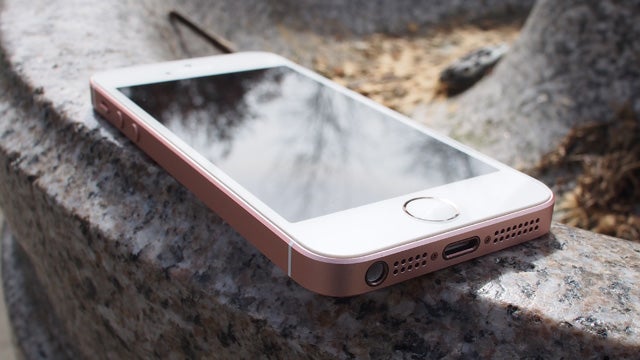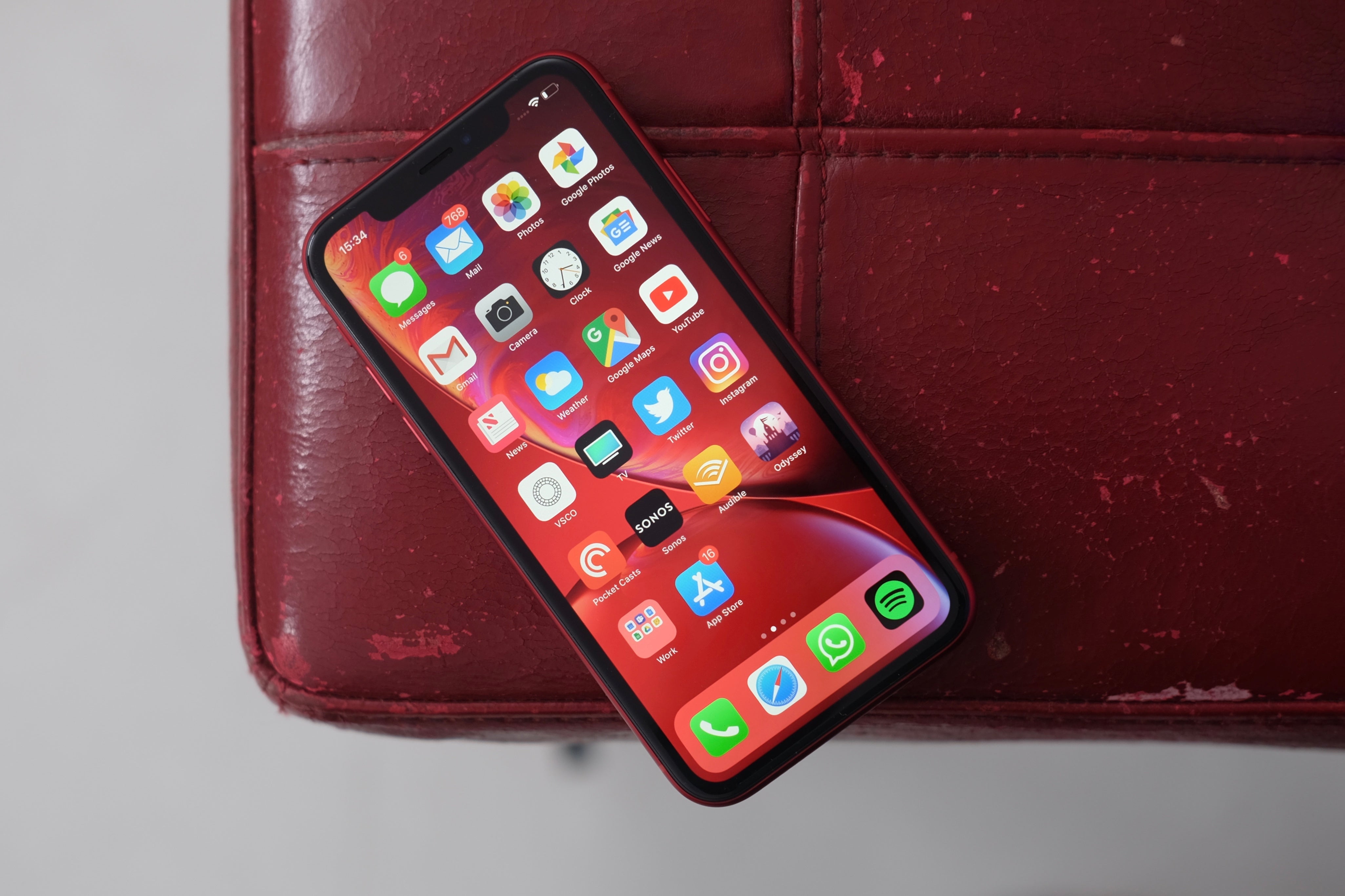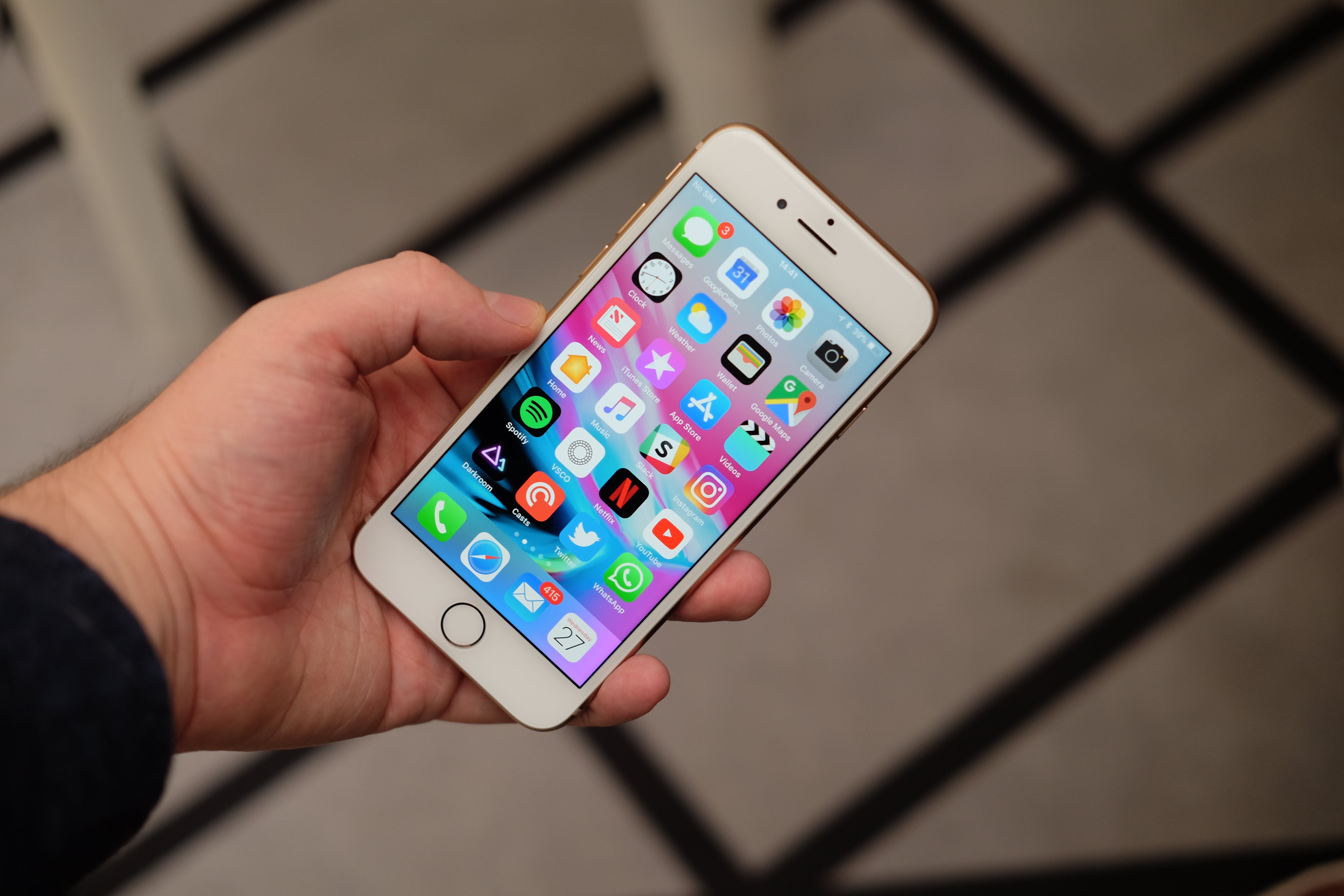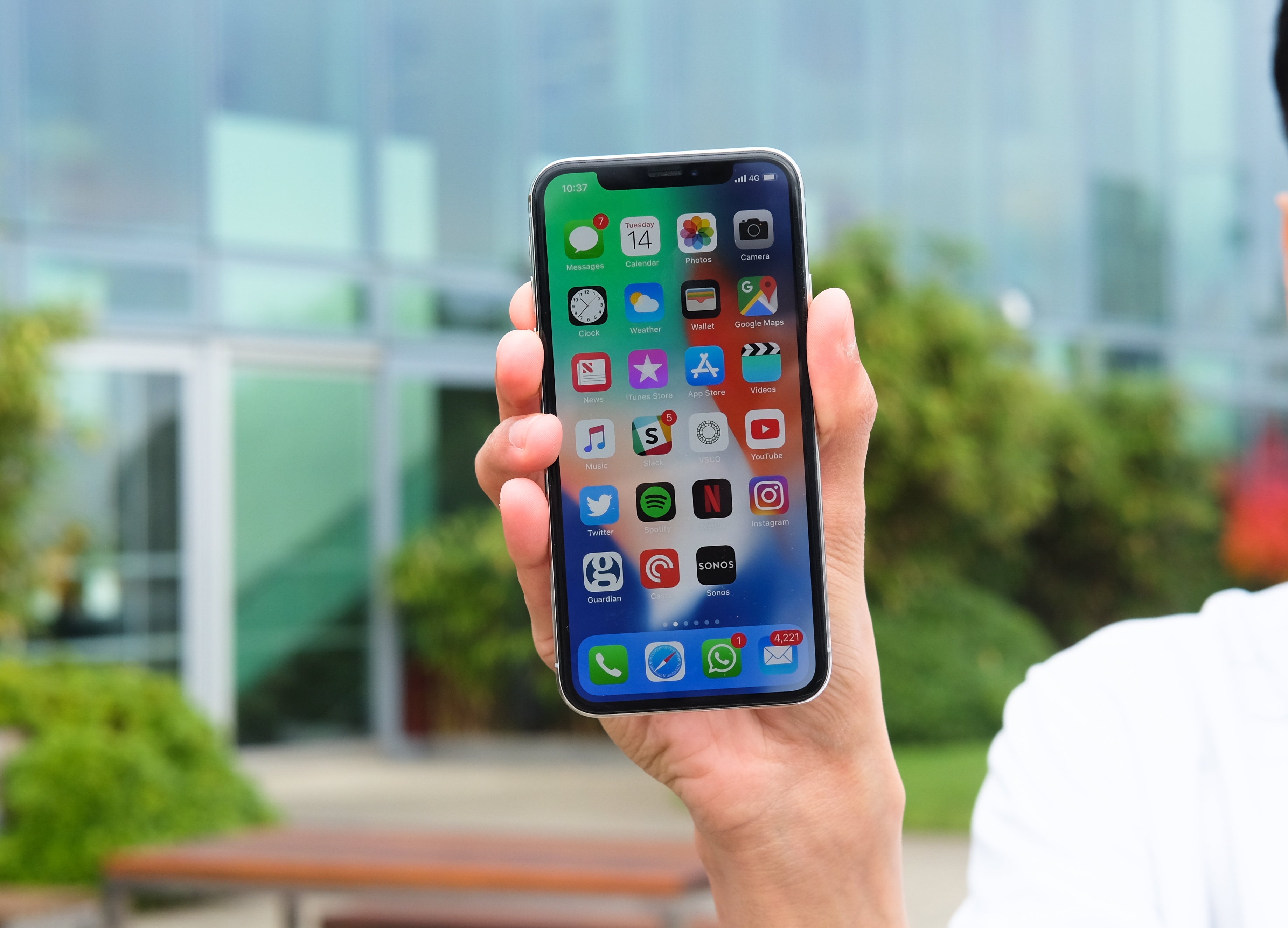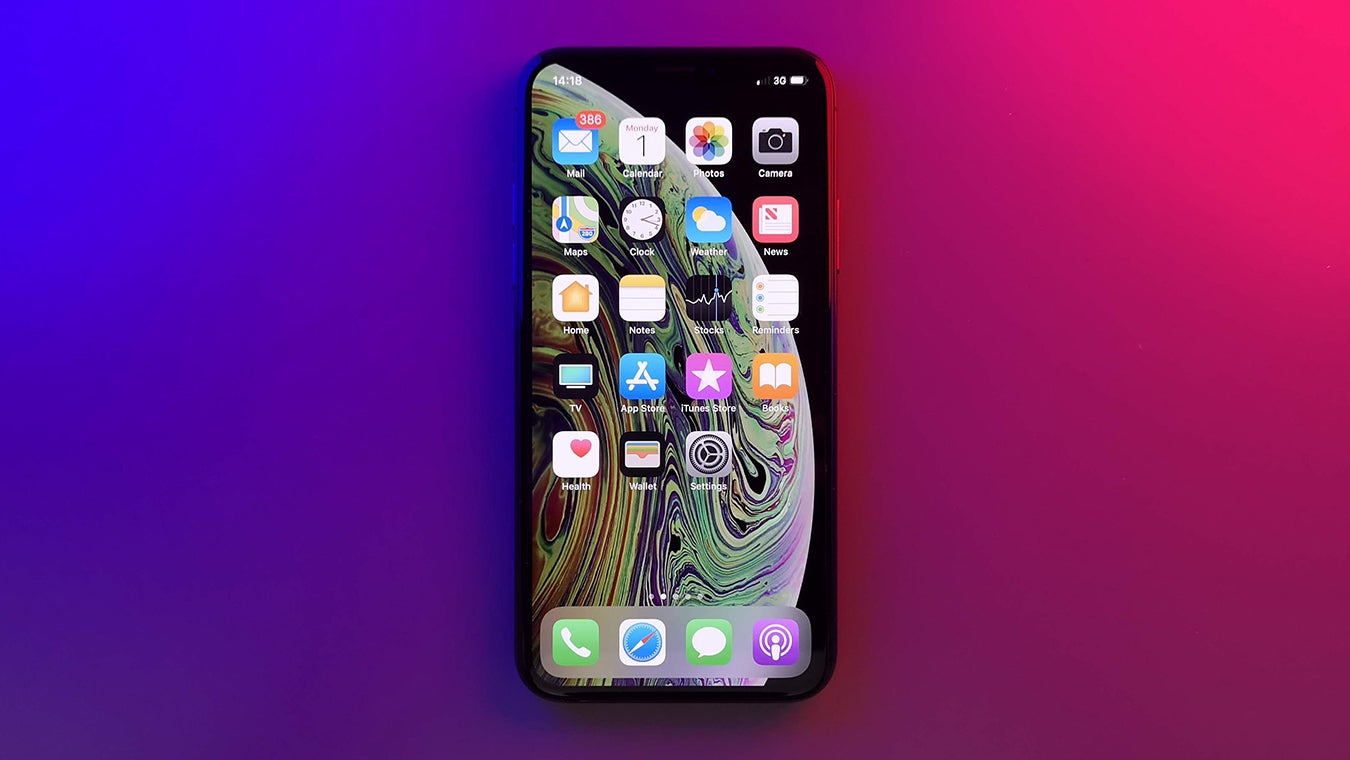Apple iPhone 15 Review
Is this the iPhone worth buying?





Verdict
There are upgrades across the board for the iPhone 15 – even if we’ve seen them on other iPhone models before. The camera benefits from a higher-resolution main sensor, the Dynamic Island is an obvious improvement over the notch and there’s even been a slight price cut in the UK. This remains the default iPhone for most people, and it remains a very good phone.
Pros
- Welcome switch to USB-C
- Really good camera
- Far more ergonomic than iPhone 14
- Dyanmic Island is much better than the notch
Cons
- No true telephoto camera
- Still no 120Hz display
- USB-C doesn’t improve charging or data speeds
Key Features
- Upgraded main cameraThe new 48-megapixel main camera takes excellent photos
- Tweaked designRounded edges, a frosted back and muted colours make for a slick looking phone
- USB-CLightning has been ditched for USB-C. Finally.
Introduction
Another year, another iPhone. But does the iPhone 15 do enough to make it a worthy upgrade, or are the Pro models where the true innovation lies?
The iPhone 15 is an odd device. It’s full of upgrades over the iPhone 14 – which happened to be one of the smallest updates in iPhone history – yet nothing here is all that new.
Everything from the 48-megapixel camera to the A16 Bionic chipset to the Dynamic Island has been on an iPhone before. The iPhone 15 almost feels like an iPhone 14 Pro, just in a more fun body.
For many people that’s likely a ringing endorsement – but is there too much of a sense of deja vu here, or does bringing down features once deemed ‘Pro’ actually make Apple’s most accessible phone the best iPhone?
Design
- A very muted colour selection
- Rounder, softer design feels fantastic
- No Action Button
The iPhone 15 is all about refinement, there’s been no significant renovation here. Instead Apple has tweaked the chassis that’s been around since the iPhone 11. This isn’t bad as this refinement makes for a phone that feels complete, nice to hold and use.
The smattering of tweaks make a notable difference. The smoother, frosted back eschews fingerprints completely and feels much grippier than the flat glass of the iPhone 14. There’s also a minor curve to the edge of the screen, which helps make this an even more comfortable phone.
With a screen that measures 6.1 inches, the iPhone 15 is one of the smallest phones around. It’s not a small phone in the way the iPhone Mini series was, rather one that has a similar footprint to the Pixel 7a or Galaxy S24. If you’re after a bigger screen, without splashing out on the Pro Max, there’s the iPhone 15 Plus. This has a 6.7-inch display, and a far heftier battery too.
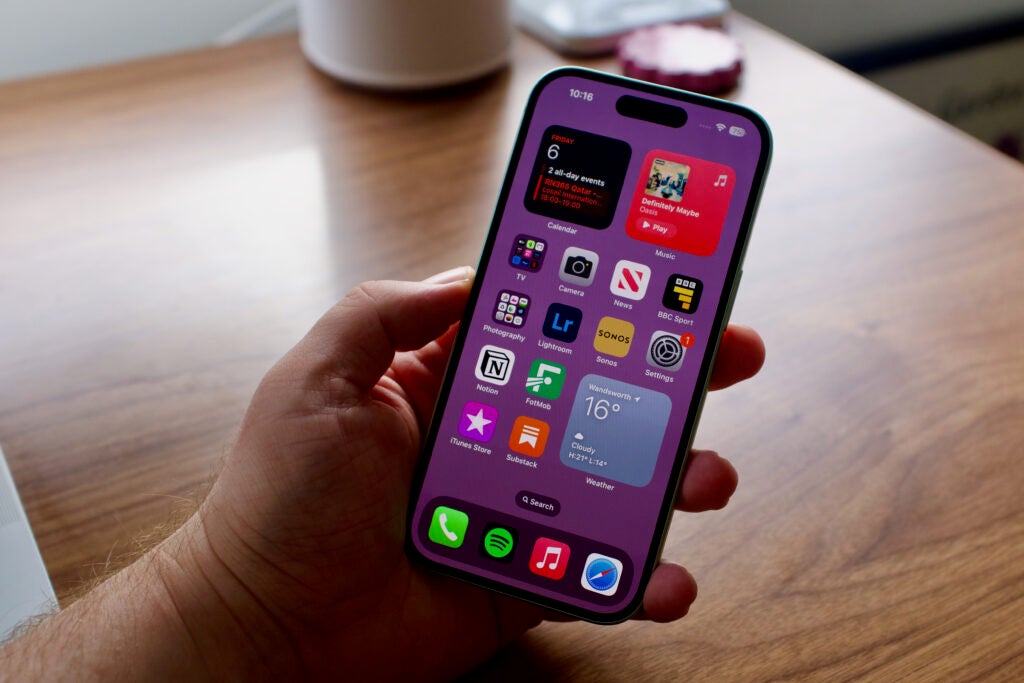
Apple’s design changes made a bigger difference to the iPhone 15 Pro and Pro Max, two phones which I felt had some usability issues in prior versions. That’s never been an issue for the standard iPhone, so the alterations here simply make an already very well-designed phone even better.
A more obvious change is the new batch of colours. These hues are lighter, more muted shades than before – plus a more traditional black option. I like the choices, with the dusty pink and fern green particularly standing out to me. Apple said it has infused the colour through the back glass, and this adds a nice contrast between the sides, camera housing and rear.
I’m sure many will immediately whack a case on top, but these phones really should be appreciated for their overall design. 75% of the aluminium in the enclosure is recycled too, which is welcome, and the box the phone comes in is free of single-use plastic.
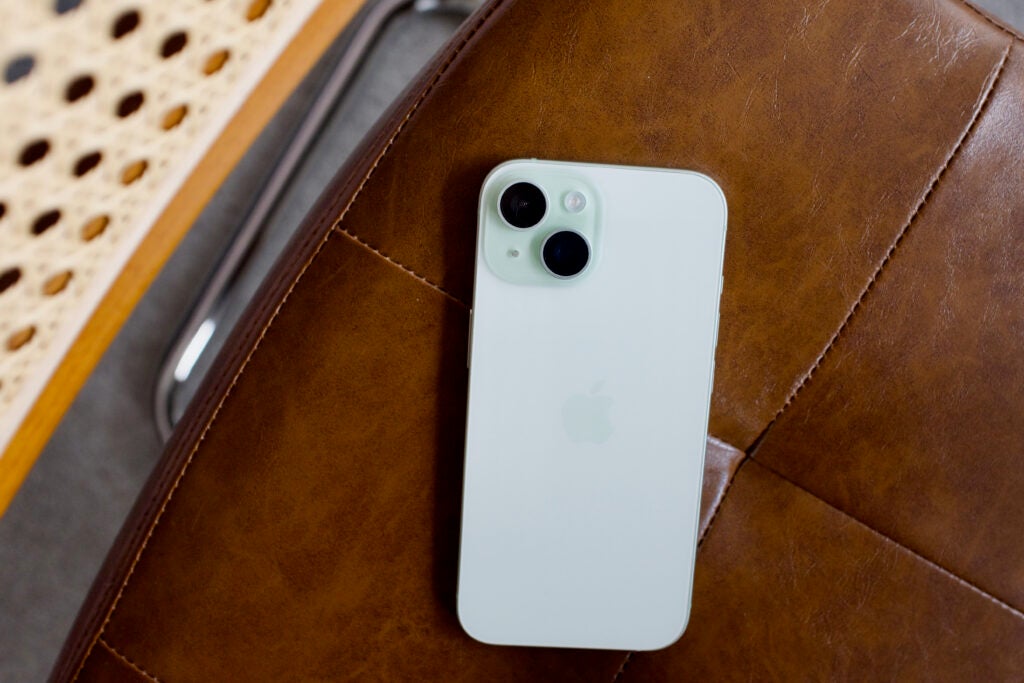
The rest of the build of the phone is treading familiar ground. There’s Ceramic Shield on the front, an IP68 rating for protection from a 6-metre submersion for 30 minutes and the ringer switch stays on the side. This switch has been swapped for the far more useful, not to mention completely customisable, Action Button on the iPhone 15 Pro. This will likely trickle down to the iPhone 16 or iPhone 17, once the Pro has another shiny new feature to highlight.
Screen
- The Dynamic Island replaces the notch
- Excellent OLED panel
- Disappointing lack of a fast refresh rate
A lot of new features on the iPhone 15 have been stripped from previous Pro iPhones. The Dynamic Island, for instance, first arrived with the iPhone 14 Pro and a year later it has trickled down to the standard range.
This pill-shaped cutout is a welcome replacement for the tired notch, acting as both a covering for the bevvy of cameras and sensors along with a secondary space for notifications to appear. Not all system notifications appear in the Dynamic Island, rather it’s reserved for apps that have implemented it and a few system apps, like the phone.
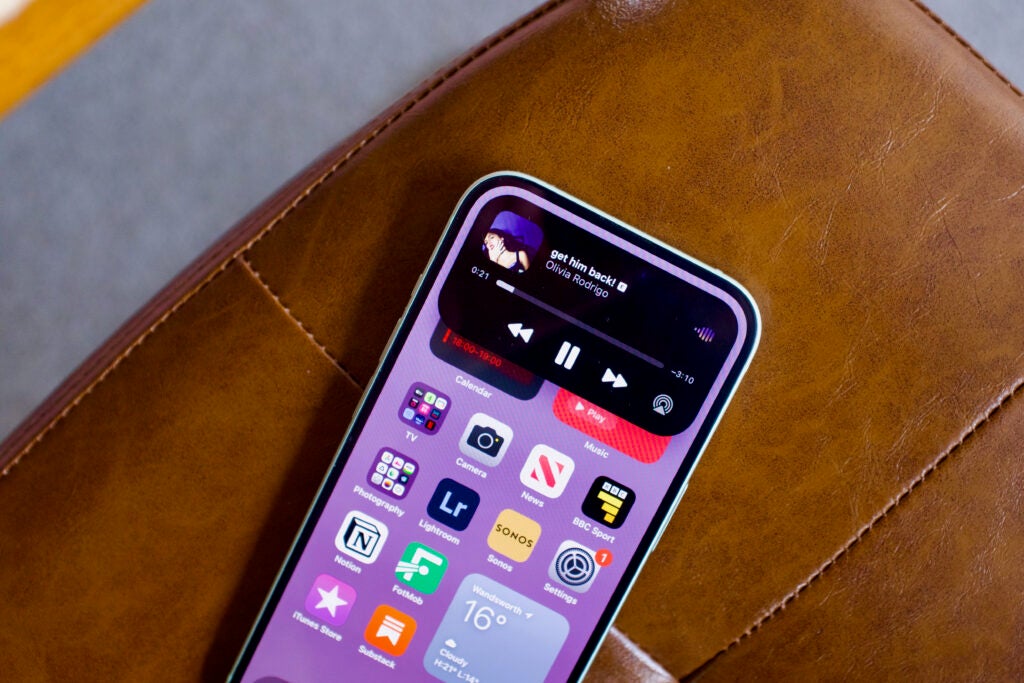
For certain apps, the Dynamic Island works fantastically well. If a song is playing in Spotify, Audible, Pocket-Casts or any app that uses the correct Now Playing API it will be visible in the Dynamic Island. Long press down to open up playback controls, or tap to easily jump back to the app. Some third-party apps have added smart features, in FotMob you can pin the score of a live football match to ensure you’re always up-to-date even if you’re in another app.
There’s still an overall feeling that the Dynamic Island is a stepping stone to the ultimate goal of an all-screen iPhone and I am sure we will eventually get there. For now though, it’s nice to see the feature across the whole new iPhone 15 and hopefully, this will see more apps implement it.
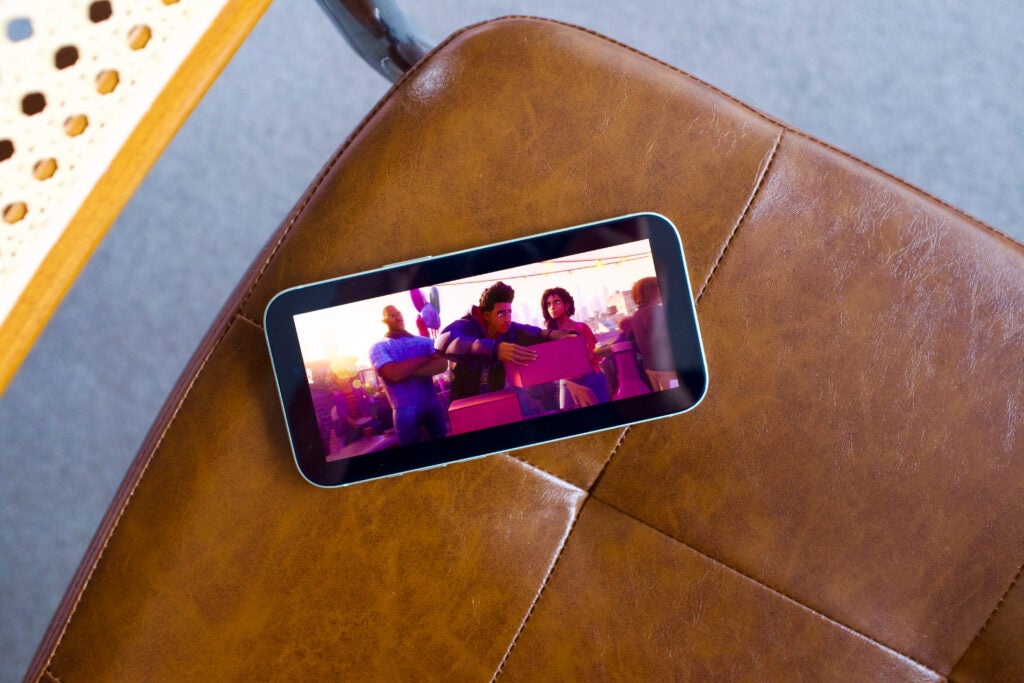
The rest of the screen is the same as the one on the iPhone 14, and herein lies my biggest issue with the iPhone 15: it still lacks a fast ProMotion screen. The iPhone 15 is the only phone I can find that costs this much and still has a 60Hz panel, making it feel noticeably slower than the 120Hz iPhone 15 Pro.
I often see people dismiss this criticism, claiming that the majority can’t even tell the difference between a 60Hz panel and a 120Hz one. I can only imagine those making these claims have never used a fast screen for an extended period, be it on a Pro iPhone or even the budget Pixel 7a, as the difference is huge.
ProMotion makes the Pro iPhones feel so much faster, either through zippier animations or smoother scrolling, and going from the iPhone 15 Pro to this iPhone 15 reveals just how big the downgrade is. The iPhone 16 needs to include ProMotion – there’s just no excuse anymore.
The quality of the actual OLED panel can’t be argued with, though. It’s brighter this time around, up to 2000 nits in some very specific outdoor scenarios, and remains an excellent screen for watching HDR footage and photos. Colours are rendered accurately too, and it’s sharp enough to avoid seeing any pixels. It’s a really nice screen, just a shame about the refresh rate.
Camera
- A new 48MP sensor pumps out detailed shots
- Lack of notable upgrades for the secondary cameras
- Still no dedicated zoom
The big upgrades for the iPhone 15’s camera all revolve around the new 48-megapixel sensor which finally replaces the 12-megapixel sensor we’ve had for years.
This isn’t exactly the same as the 48-megapixel sensor found on the iPhone 15 Pro Max, which is larger, although Apple has widened the aperture slightly here to f/1.6.
By default, the iPhone 15 (and 15 Pro for that matter) shoot 24-megapixel images which is an upgrade over the 12-megapixel images the iPhone 14 Pro takes. As a result, even though they use the same chip, I actually prefer the regular shots from this cheaper device.
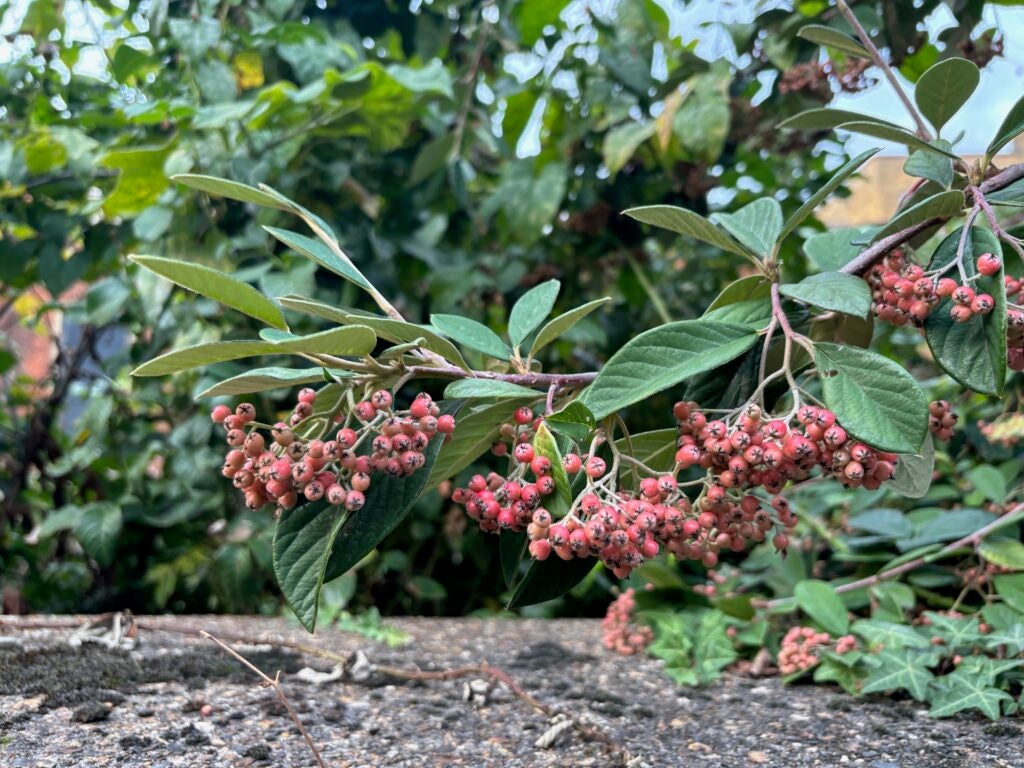
The extra megapixels allow for a sharper, more detailed image that can be zoomed in on without sacrificing as much detail. The photos look really good.
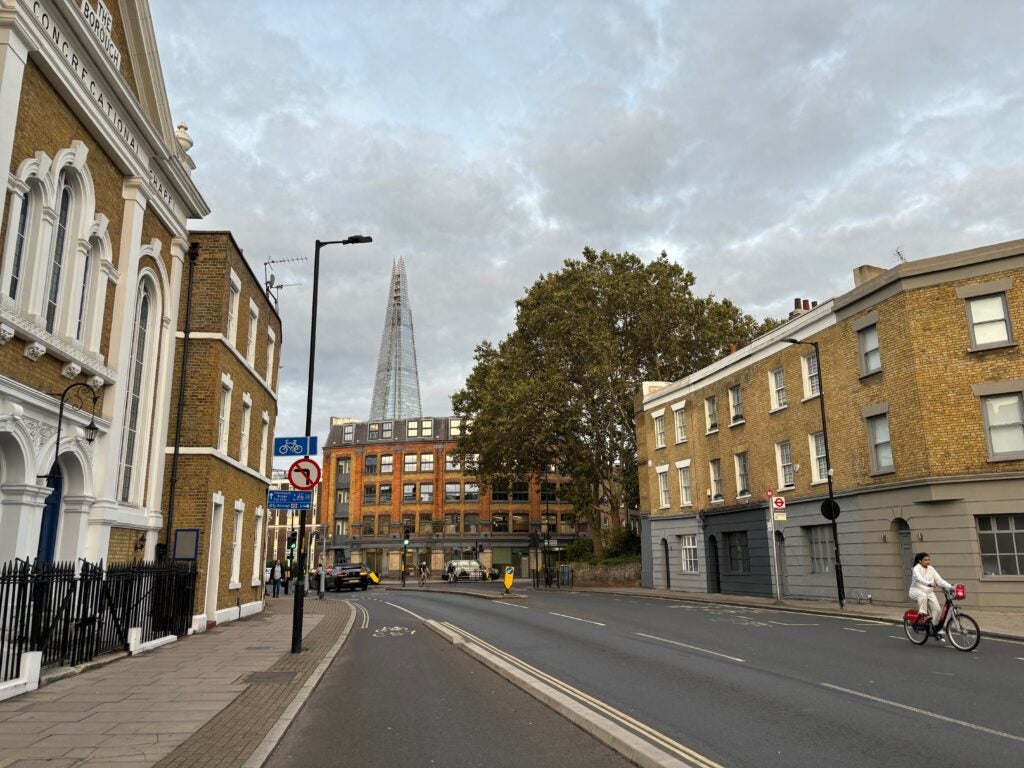
Shoot up close to a subject and you’ll get a lovely natural bokeh effect that often looks more realistic than the software version, blurring the background and pulling the foreground into sharp focus.

The iPhone’s various dedicated camera software features, including Deep Fusion and Smart HDR, make sure colours look vibrant without being oversaturated and this camera is very reliable, whether you’re shooting a face or a colourful plant.
I’d give the Pixel 8 Pro the upper hand at night – the iPhone 15 still has a very reflective lens that makes itself too often known when shooting in darker situations with lots of streetlights. You can still shoot well at night though, and the dedicated night mode helps for static shots where movement is minimal.


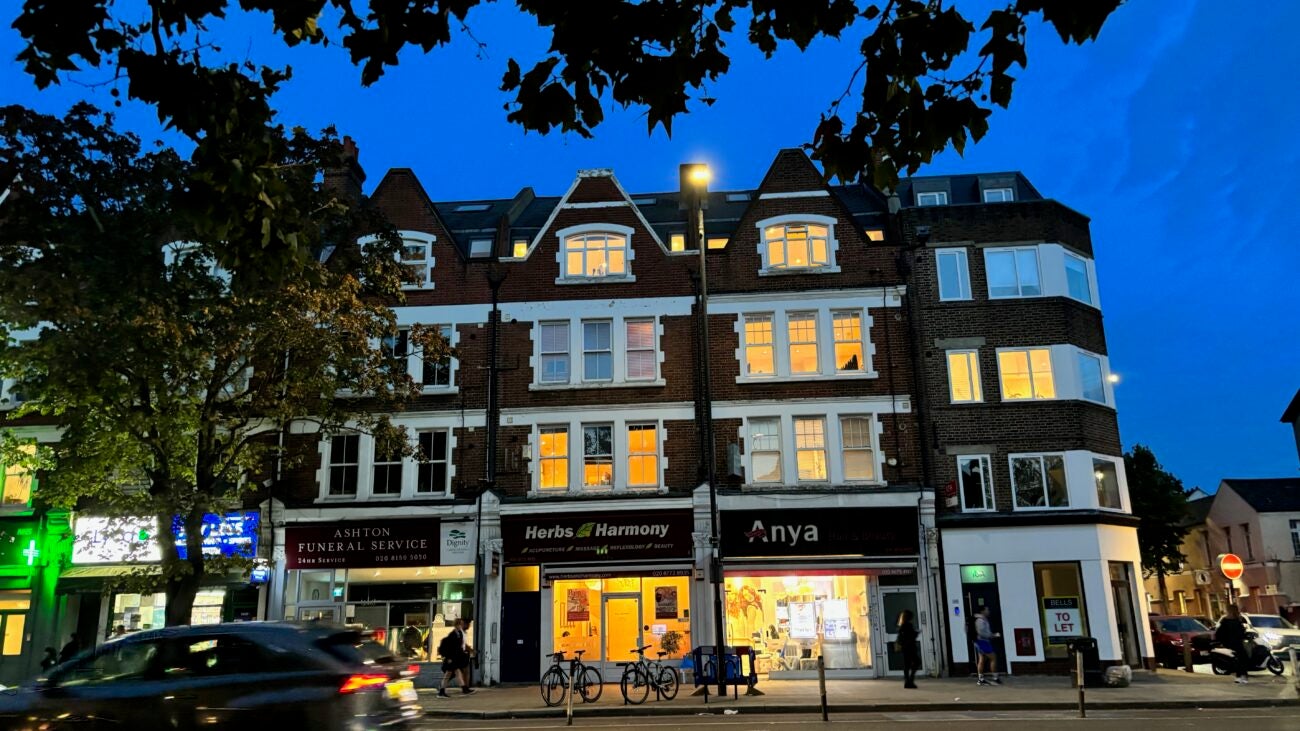
There’s still no dedicated zoom camera, with that third sensor and lens exclusive to the Pro. Instead, the iPhone 15 uses that 48-megapixel sensor and quad-pixel tech to capture 12MP 2x zoomed photos.
The results are good, if not as good as those from the dedicated 3x sensor on the iPhone 14 Pro. 2x just generally isn’t that useful, at least in my eyes.


The front camera remains at 12MP and the ultrawide looks to be exactly the same as before. The iPhone 15 also misses out on the ‘Pro’ modes available on the 15 Pro, including shooting ProRes and ProRaw. There’s also no support for log shooting, a flat colour profile ideal for those who will grade the colour of the video afterwards.
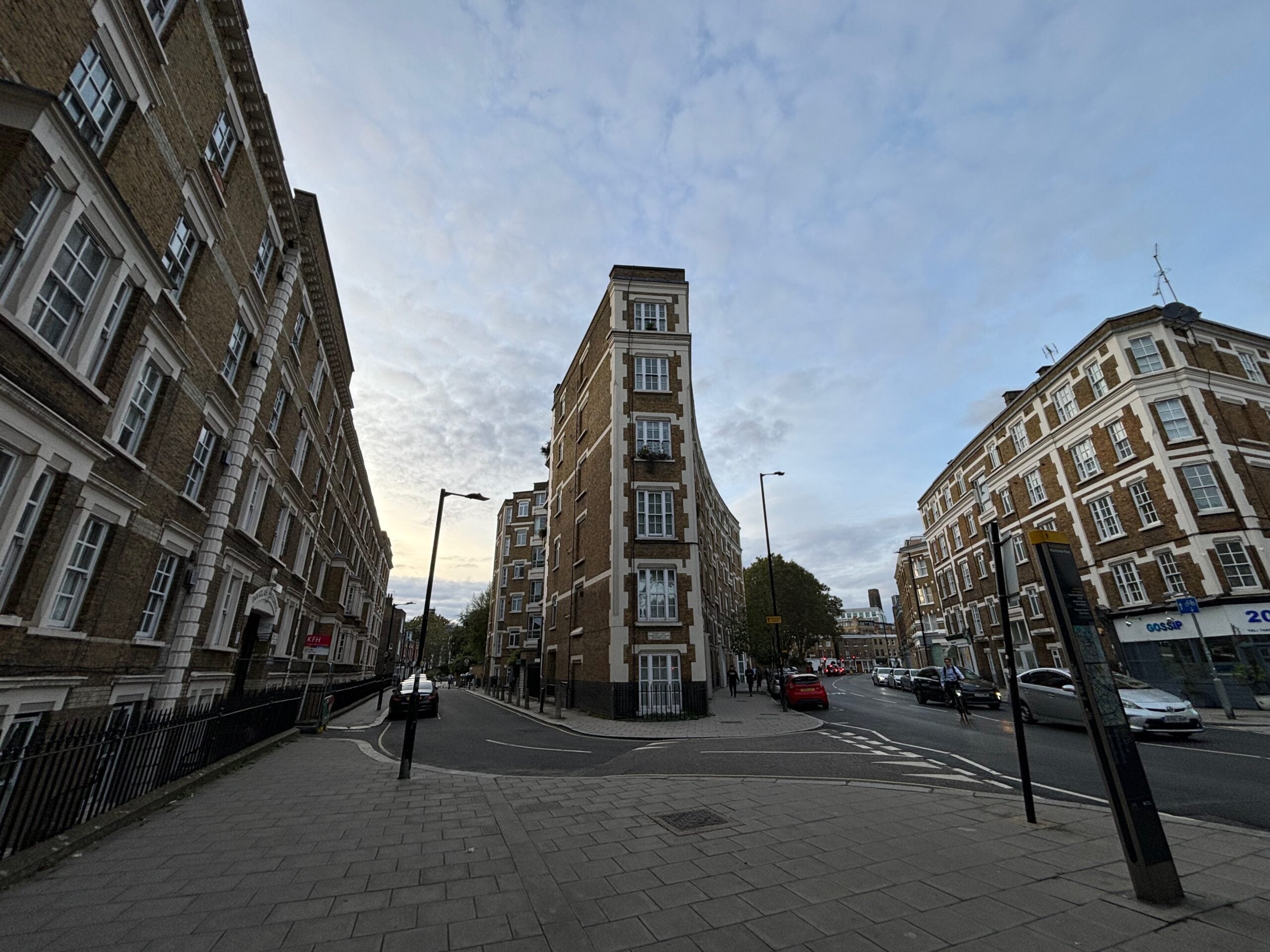
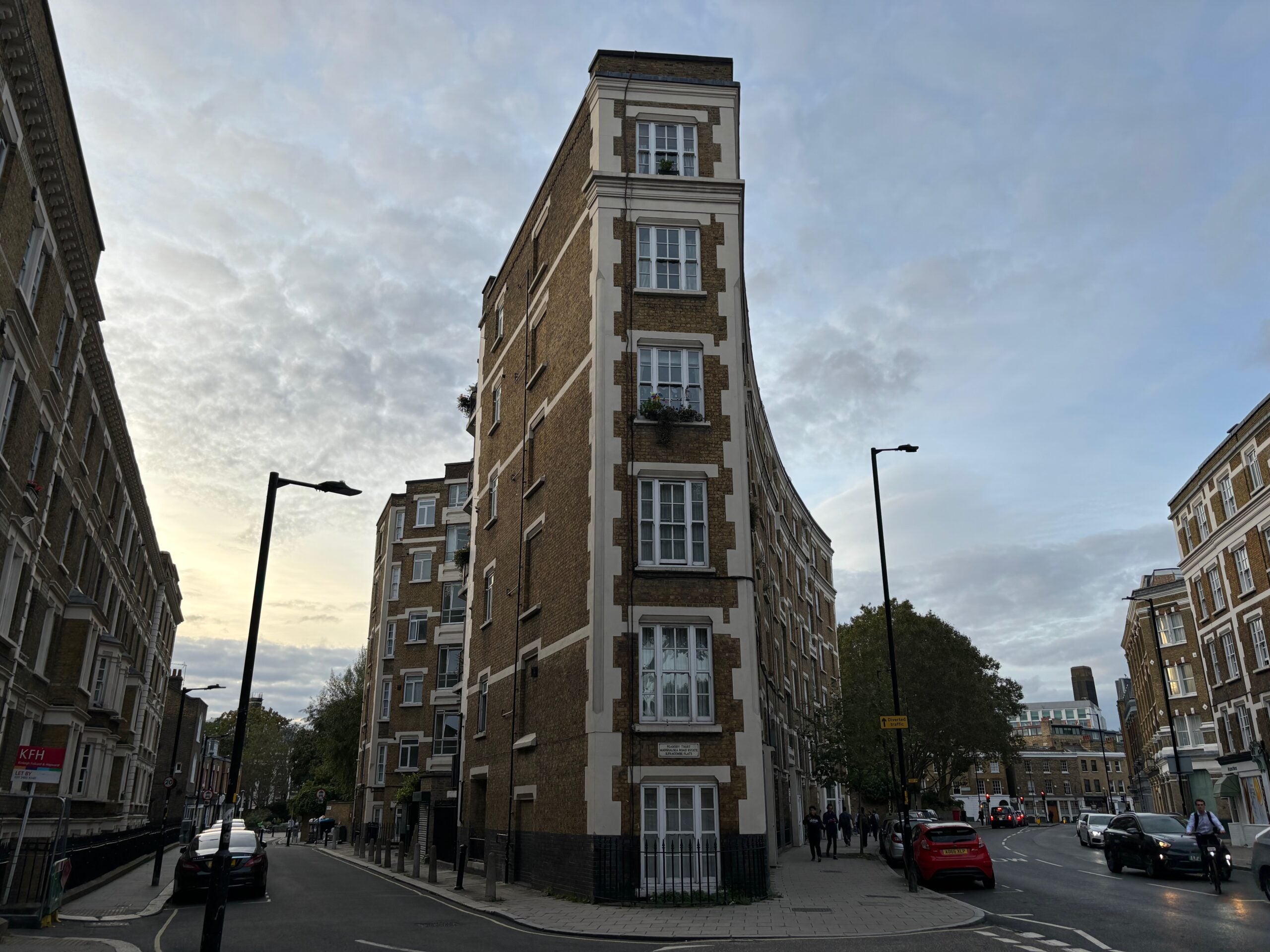
Even without a few of these Pro extras, the videography skills are strong. Cinematic mode (which adds some background blur) goes up to 4K 30fps, while Action Mode (which keeps the camera steady during fast movement) works up to 2.8k 30fps.
Performance
- The A16 Bionic chip is fantastic for the price
- 5G on all models
- 6GB memory, up to 512GB storage
Powering the iPhone 15 is an A16 Bionic chipset, rather than the A17 Pro found inside the iPhone 15 Pro. This is paired with 6GB memory (2GB less than the Pro) and either 128GB, 256GB or 512GB of internal storage.
The A16 Bionic isn’t new, as it was at the heart of the iPhone 14 Pro, yet even a year on it still holds up fantastically well. This is a supremely capable chip for a £799/$799 phone, churning out synthetic benchmark scores that outperform far pricier Android phones.
In day-to-day use I haven’t noticed any substantial difference between the A17 Pro and the A16 Bionic in normal tasks. All the currently available high-end games on Apple Arcade and the App Store – even intensive titles like Genshin Impact – perform perfectly on the iPhone 15 and there’s no stutter or lag anywhere to be seen.
The difference between the two chips will likely make itself more known in the future, though. Apple has already confirmed games like Assassin’s Creed Mirage and Resident Evil 6 will be exclusive to the iPhone 15 Pro, hinting the latter’s graphics power is far better for optimised titles.
There’s also no USB 3 support with the A16 Bionic, so the USB-C port here retains the same speeds as the Lightning port has done for a decade. No plugging in high-speed SSDs to record footage directly onto here. Wi-Fi 6E is predictably missing too.
All of these are specific use cases though, and for most people who are thinking about the iPhone 15 rather than the Pro model, they’re features that can be lived without. All you need to know is the iPhone 15 is fast and should stay that way for several years.
US versions of the iPhone 15 continue to ship without a SIM slot. Somewhat surprisingly, there hasn’t been a great move to this for other regions which all keep the physical tray and offer eSIM as an option rather than a requirement. Just the way it should be, for at least the next few years.
Software
- iOS 17 adds welcome tweaks and new features
- Some exclusive camera features
iOS 17 is installed on the iPhone 15, and it’s available for all iPhones from the iPhone XR and XS. Judging by that metric, the iPhone 15 will receive updates for many years to come – hopefully the same seven years Google is promising with the Pixel 8.
Features in this latest version include some very handy additions, a bunch of welcome tweaks and a general tidying up of many UI elements.
Bigger features include StandBy – a slimmed-down view that jumps into life when the phone is horizontally charging, ideally on a MagSafe stand. This is great as a bedside alarm clock, giving easy access to the time, weather and any Live Activity. The Phone has also received numerous updates, including the transcription of incoming Voicemail messages and nice contact posters that easily identify who’s ringing.
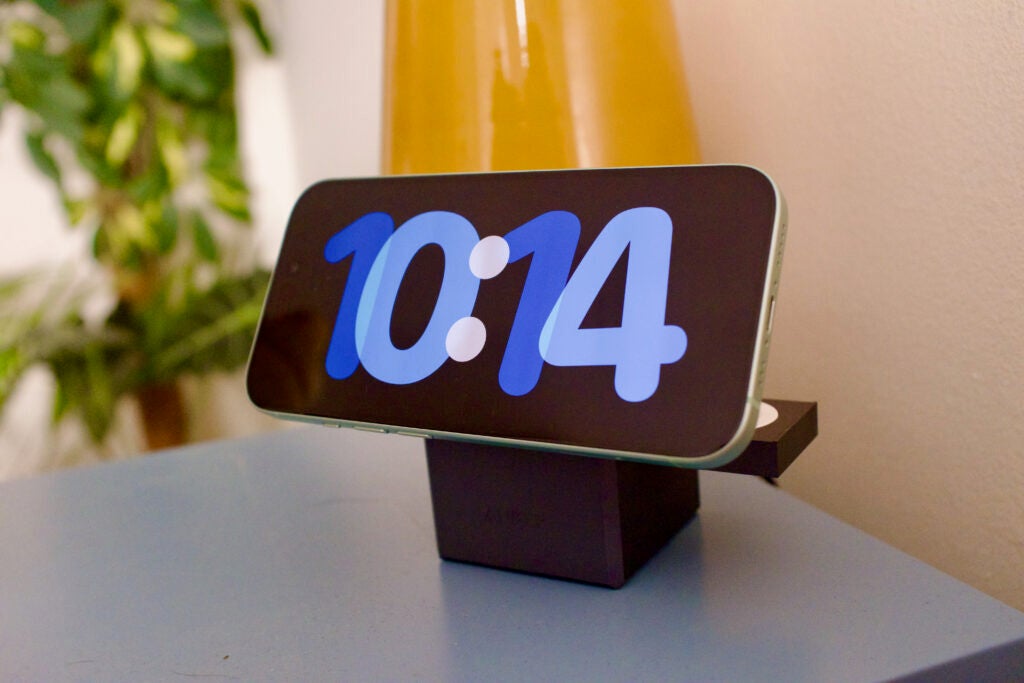
Welcome tweaks include a cleaned-up view in iMessage, interactive widgets, FaceTime video messages and various AirDrop upgrades.
All these above features are available on older iPhones too, but there are a few software tweaks exclusive to the new phones. The UWB chip inside the phone improves its ability to be accurately found within the Find My app, while there’s some smart cancellation going on during phone calls to reduce background audio.
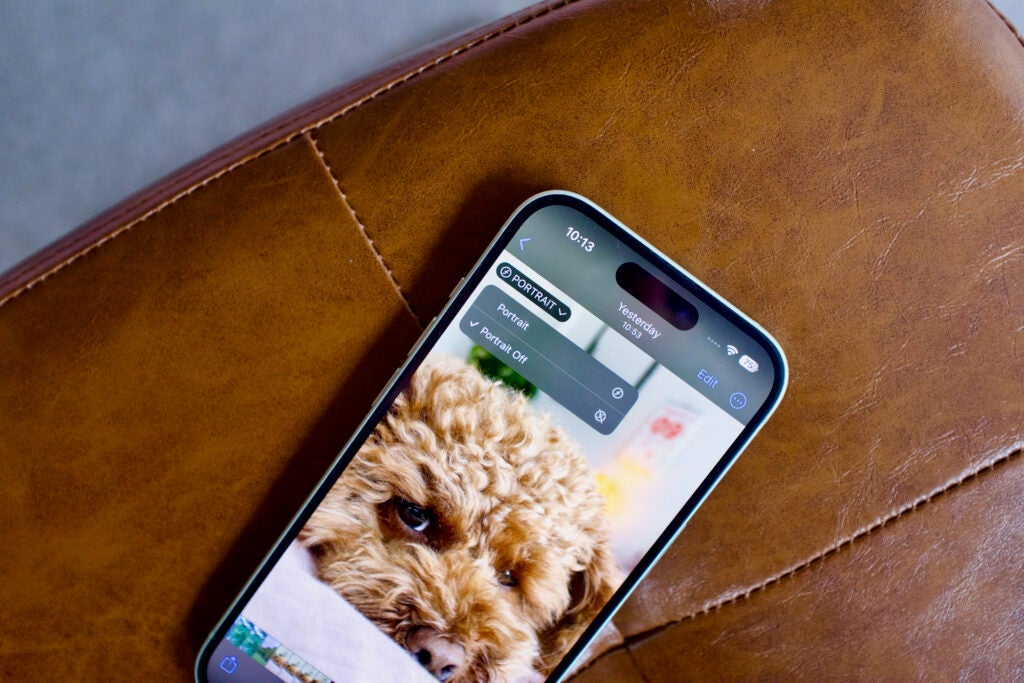
There’s also a clever camera software feature that lets you add in the portrait effect after a snap of a person or animal has been taken. This works very well, as the camera is now always capturing the 3D depth data in all pictures. You can also go back to portrait shots taken with older iPhones and alter the focus point in those photos.
Battery Life
- USB-C replaces Lightning
- MagSafe and Qi remain for wireless connectivity
- No charger in the box – just a cable
The biggest change to the battery in the iPhone 15 is the cable that charges it. Likely owing to incoming EU legislation, Apple has finally made the switch from Lightning (which has sat on every iPhone for over a decade) to USB-C.
This, in basic terms, is the same port found on Android phones, iPads, the Nintendo Switch, numerous cameras and a whole load of other tech. The switch means a single cable can charge an Apple MacBook Pro 14, iPad 10th gen and iPhone 15 and will be a boon for those who hate the mess of carrying multiple cables around.
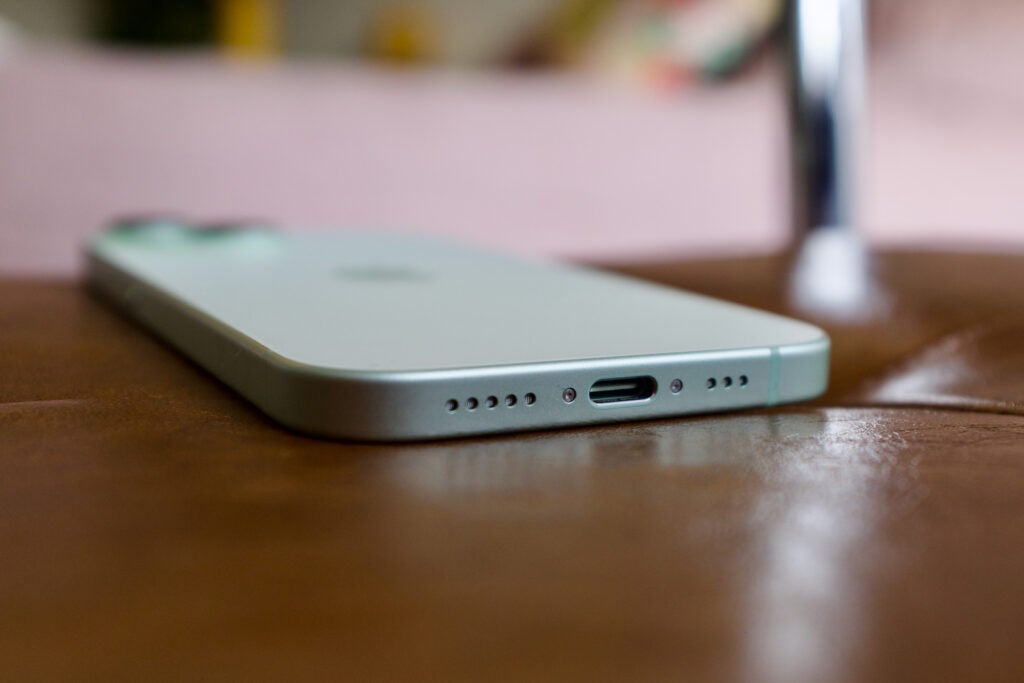
Initially, the change will irritate a lot of people. For instance, the cable I have in the car to charge is Lightning – which needs to remain for my partner’s phone, but now I’ll have to remember to leave a USB-C cable in there too. I also have a few Lightning docks and other accessories, including a Backbone One controller, which I really like and these are mostly useless now.
Something USB-C hasn’t improved is charging speeds. In my tests, the iPhone 15 charges from 0-50% in roughly 30 minutes and to 100% in just above 90 minutes. These are exactly the results I got when I tested the iPhone 14. This is much slower than the Android competition you can see below.
In a very Apple move, the USB-C connector is colour-matched to the phone – a nice touch you’ll probably never notice. Wireless charging, both in standard Qi and MagSafe forms, remains too, so there is a way to charge both an iPhone 14 and iPhone 15 with the same cable.
In terms of how long the battery lasts, everything in my tests shows very little movement from the last few iPhones. There are no huge advances here. This is a phone most will need to charge every night, with lighter users getting, at most, until lunchtime of day two.
An hour of Netflix streaming, the iPhone 15 ate through 8% – that’s the same result as the iPhone 14 and a percentile better than the iPhone 13. In my iPhone 14 review, I said I could get through the day with 20-30% left in the tank and it’s the same here.
Latest deals
Should you buy it?
You should buy if you want a reliable phone with a great camera at a good price
Thanks to an influx of features once reserved for Pro iPhones, the iPhone 15 is a very good phone that ticks numerous boxes.
You shouldn’t buy if you want the iPhone with the best screen
The screen, or more specifically the lack of ProMotion, is the real disappointment here. The 60Hz panel really stops this being the best iPhone.
Final Thoughts
Everything good about the iPhone 15 has been available on iPhones before. There’s a lack of anything genuinely new here, with all the headline additions plucked directly from the iPhone 14 Pro.
Yet, that doesn’t stop the iPhone 15 from feeling like a good upgrade for anyone with an iPhone 12 or 13. The minor tweaks make a great design even better, the camera is more versatile thanks to the extra megapixels and the Dynamic Island is a better solution than the notch.
If you’re happy to pay a little extra, either upfront or across a multi-year contract, the iPhone 15 Pro Max represents a notable step up for those who want something a little more complete. The better screen, superior zoom camera and nicer build are all worth the extra cash for me.
How we test
We test every mobile phone we review thoroughly. We use industry standard tests to compare features properly and we use the phone as our main device over the review period. We’ll always tell you what we find and we never, ever, accept money to review a product.
Used as main phone for more than a week
Taken hundreds of photos in various conditions
Compared against the iPhone 14
FAQs
There are five colours: black, blue, pink, yellow, green.
There is no charging plug included, just a cable. Any USB-C charger, ideally a 20w or higher one, will work.


